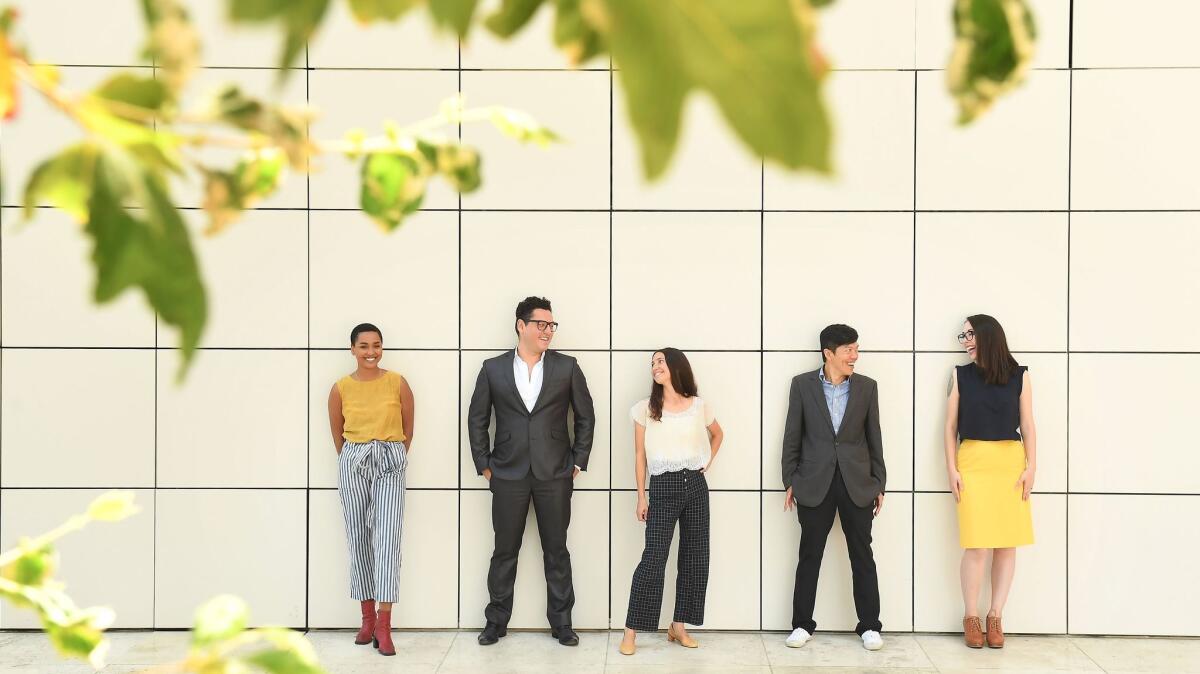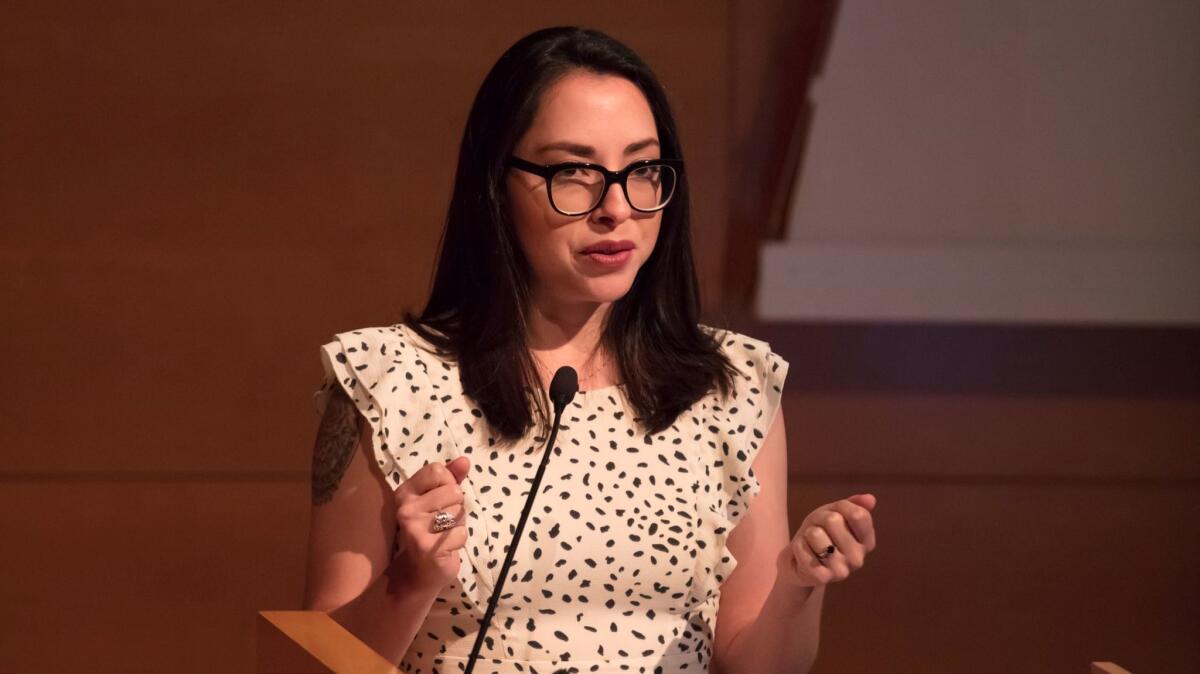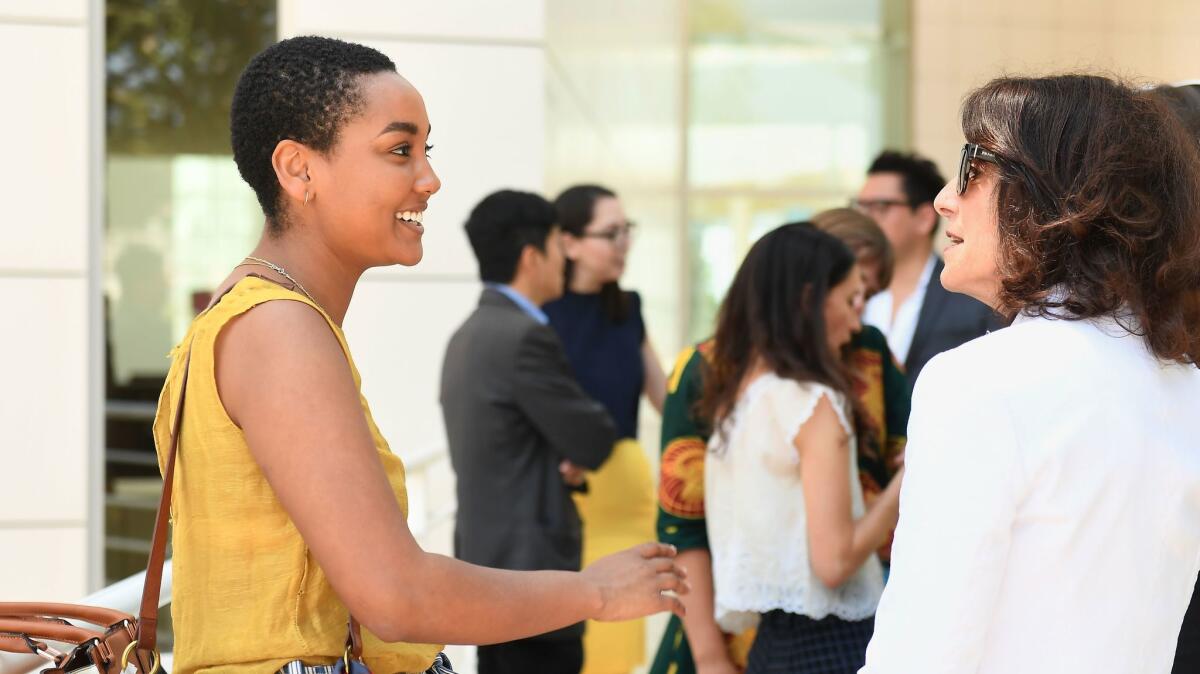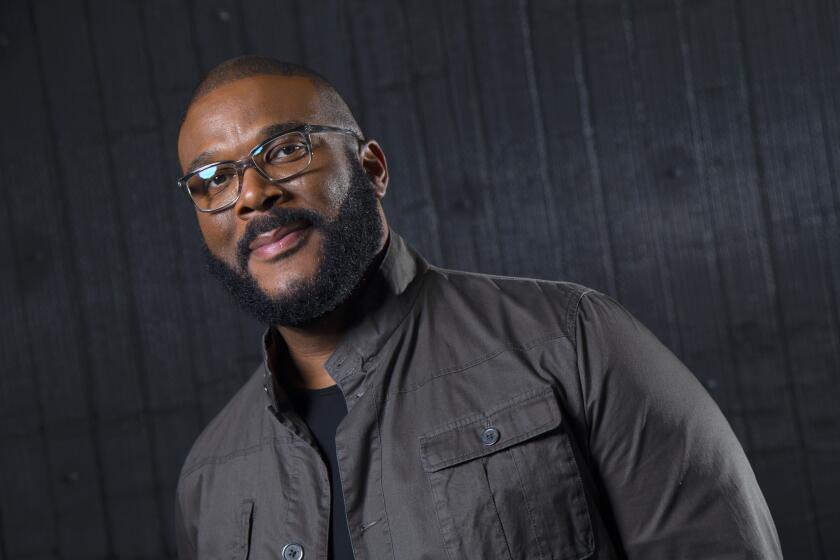In its 25th year, the Getty’s Multicultural Internship Program is changing the face of arts leadership in L.A.

- Share via
In summer 1999, Edgar Garcia took an internship at the Los Angeles Conservancy that helped change the course of his life.
Born in Hollywood and raised in Lincoln Heights, Garcia is the son of Mexican immigrants who, when he was accepted at Yale University, hoped he might study something “practical.” Maybe medicine, engineering or law.
“I was forcing myself to go down that track and take the courses in areas I thought I had to,” he recalls. “But every time I took a history or architecture course, that was my passion.”
That passion ultimately led him to apply to the Getty Foundation’s Multicultural Internship Program, which funds undergraduate internships for students from underrepresented groups at cultural organizations around Los Angeles County.
Through that program, he landed a summer internship at the Los Angeles Conservancy, where he helped map historic sites in Lincoln Heights and put together a historical exhibition in collaboration with students from Lincoln High School.
“I’d had no idea that organizations dedicated to either architecture or public art or programs like that were so professionalized,” recalls Garcia. “I didn’t know that was even a viable career.”
Indeed, it has been quite viable for Garcia in the years since.
Today, he is the deputy for art and culture at City Hall, helping manage art and culture policy for Mayor Eric Garcetti.
“I’m proud of the fact that the mayor’s cultural person happens to be a Mexican from Lincoln Heights,” says Garcia. “I came out of a neighborhood that we work with every day.”
We could look at arts organizations across the city and see that they still didn’t appropriately reflect the diversity of communities in Los Angeles.
— Joan Weinstein, deputy director, Getty Foundation

The Getty Foundation’s Multicultural Internship Program was launched as a direct response to the Los Angeles riots in 1992.
“It was really a process of thinking, how does the Getty respond to these events — and respond in a way that relates to our mission?” says foundation Deputy Director Joan Weinstein.
“We could look at arts organizations across the city and see that they still didn’t appropriately reflect the diversity of communities in Los Angeles,” she adds. “So we started to think of the pipeline issue.”
By funding paid internships for underrepresented minorities at dozens of cultural organizations around L.A. County, the foundation got to work building that pipeline. The idea: Provide students with real-world professional experience at cultural nonprofits small and large, be it the Center for the Study of Political Graphics or the Museum of Contemporary Art.
The first crop of 89 interns completed sessions at 80 arts organizations around Los Angeles in summer 1993. Twenty-five years later, the Multicultural Internship Program is still going strong.
Over that period, the Getty Foundation has funded more than 3,200 internships at an estimated 160 Los Angeles arts organizations — including 120 internships this summer. That amounts to an investment of more than $12 million over a quarter century.
The program is open to individuals with some connection to L.A. — students who are either attending university in the area or were raised in Los Angeles County — and in the large scheme of things, it may not seem as if an arts internship program could do all that much beyond providing an enriching summer experience to a handful of individuals. But the Getty’s program is quietly helping change the face of culture in Los Angeles.
It is no secret that the arts industry has a diversity problem. According to a report released by the Andrew W. Mellon Foundation in 2015, 84% of high-level jobs at museums nationwide — curators, conservators, educators and leaders — are occupied by whites. The only areas in which minorities dominate are in janitorial and security services.
In a county like Los Angeles, where roughly half the population is Latino, 14% is Asian and nearly 9% is black, stats such as those would translate to cultural leadership that in no way represents the ethnic or racial reality on the ground.
For 25 years, the Getty’s Multicultural Internship Program has attempted to adjust those figures.
Alumni include painter Mark Bradford, who recently had a one-man show at the Hammer Museum and will represent the United States at the Venice Biennale this year; Letitia Fernandez Ivins, who manages public art programs at Metro, and John Tain, who is an assistant curator for modern and contemporary collections at the Getty Research Institute, or GRI.
Tain, who was born in Taiwan and raised in the San Gabriel Valley, completed his internship in 1995 at what was then the Getty Research Center, now the GRI. A paid position — “I needed to have a paying summer job,” he says, “and this was enough to pay rent and other expenses” — it provided him with work experience.
“I was having a real hands-on experience working with archival materials and special collections material,” he says. “I wasn’t pushing paper.”

For Ivins, who has worked at Metro for 2½ years helping to oversee public art projects in train stations and bus facilities, the internship provided a broader knowledge of arts in Los Angeles.
Ivins, who is part Filipina and grew up around Culver City, did two multicultural internships — one at the Skirball Cultural Center and another at the Pacific Asia Museum in Pasadena in the early 2000s.
“I saw parts of L.A. that I had never really dug into,” she says.
A trip to Highland Park introduced her to the work of artist Tricia Ward and the nonprofit Art. Community. Land. Activism., or ACLA, which employed art as a community-organizing tool.
“When I graduated, on the recommendations of a mentor, I volunteered with them,” says Ivins. “That was the segue into nonprofit art organizations.”
Over the years, an informal network of former Getty interns has become more influential.
“I can call my friend the filmmaker or my friend the registrar at UCLA or my friend the archivist,” Garcia says. “It’s a total cross-pollination.”
“Every mentor I’ve worked under has been an amazing resource and I keep in contact with most of them today,” says Hanna Girma, an assistant curator at the Mistake Room, an arts nonprofit in downtown. (She curated the ongoing exhibition “Analog Currency,” which explores the reverberations of the Internet on culture.)
Girma grew up in Oakland and is of Ethiopian and African American descent. As a student at UCLA, she interned at the Hammer Museum and the Mistake Room. She was always drawn to the arts but says her Getty mentors “really have helped shape me.”
Even with the program’s successful track record, there have been challenges. Last year, a white student who did not get into the program sued the Getty Foundation for discrimination. The case was settled for an undisclosed sum and now the official language states that applicants must be “members of an underrepresented group including but not limited to those of African American, Asian, Latino/Hispanic, Native America, or Pacific Island descent.”

None of this changes the Getty Foundation’s aim of continuing to diversify the leadership ranks at the city’s cultural institutions, an aim that is beginning to blossom as some former interns reach a stage of their careers where they begin to wield greater influence over programming and policy.
As they move on to bigger roles, the foundation has continued to support them — providing, for example, funding for professional development.
“Because of the Getty I’ve been to the California Assn. of Museums conference more than once and I’ve been to the American Alliance of Museums mega-conference more than once,” says Betty Avila, associate director at Self-Help Graphics. “Every time I attend those types of things, it grows my network even more — it grows opportunities and connections.”
Avila, who grew up in Cypress Park and attended Pitzer College in Claremont, completed her internship at the Getty Research Institute in 2007, where she helped bring nontraditional audiences to the museum. As part of that job, she arranged for garment workers, housekeepers and day laborers to get curator-led tours of a classical art exhibition at the Getty Villa in Pacific Palisades.
As a result, she says, “I became very interested in community engagement,” which inspired her to take her position at Self-Help, the community arts nonprofit that works with myriad constituencies in Boyle Heights.
Weinstein says it is “unbelievably gratifying” to see former interns start to transform the city’s cultural profile.
“It can take 25 years to effect change,” she says. “It’s patience.”
Sign up for our weekly Essential Arts & Culture newsletter »
ALSO
Women dominate art museum staffs, but minorities are much smaller part, study says
More than 65 art galleries to join PST LA/LA museum exhibitions with Latino and Latin American shows
The Getty just announced its most important drawings acquisition in 20 years—and adds a ‘Surprise’
More to Read
The biggest entertainment stories
Get our big stories about Hollywood, film, television, music, arts, culture and more right in your inbox as soon as they publish.
You may occasionally receive promotional content from the Los Angeles Times.











